

Josh Nevett
CarExpert's top five large SUV reviews of 2025
2 Days Ago
The 2023 Hyundai Palisade takes an already good thing and gives it more technology, more chrome, and greater safety credentials.
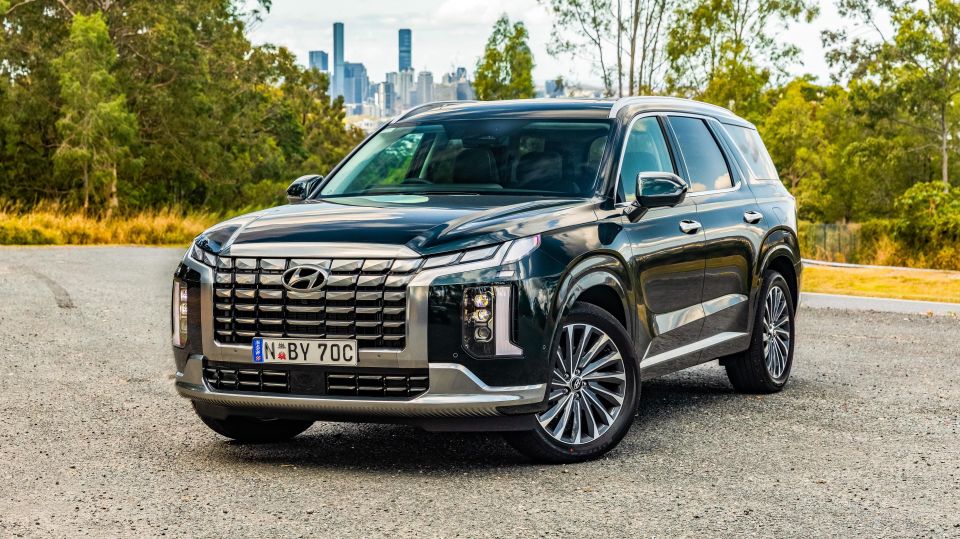
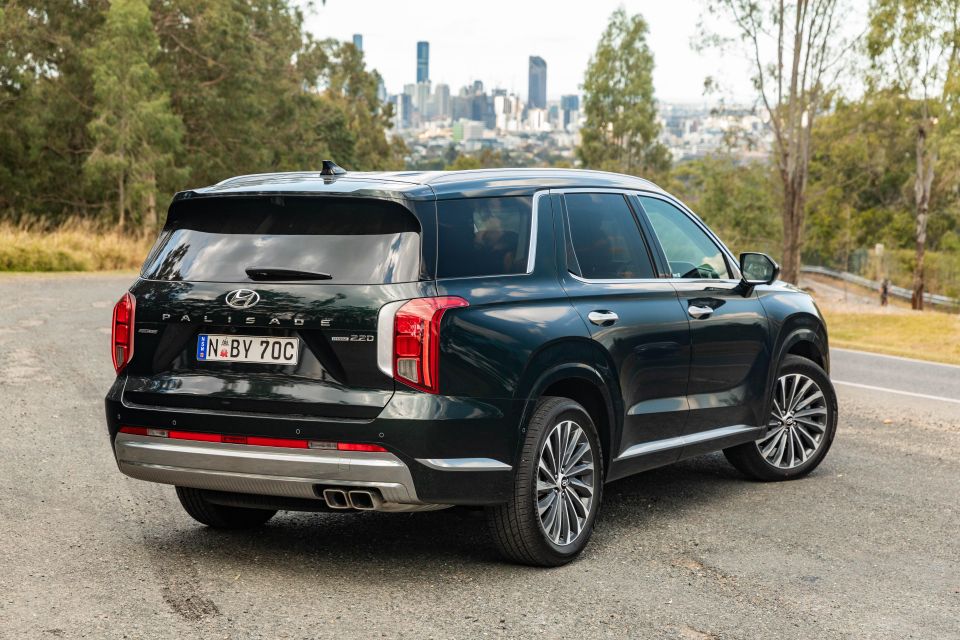

Quickly see how this car stacks up against its competition. Select any benchmark to see more details.
Where expert car reviews meet expert car buying – CarExpert gives you trusted advice, personalised service and real savings on your next new car.
The Hyundai Palisade appears to have really resonated with Australian buyers.
It sits neck-and-neck with its smaller, more affordable Santa Fe stablemate in the sales race, and is edging ever closer to the Mazda CX-9. It’s still some way off the Toyota Kluger, Australia’s best-selling large crossover, but that model has a good 20 years on the newbie Palisade.
A rather significant update for 2023 should help the Palisade’s momentum. Prices are up and the range has shrunk, but there are more features, the local debut of Hyundai’s Bluelink app, and a fresh new look up front.
All Palisade models also get dual 12.3-inch displays and USB-C outlets inside, plus new interior and exterior colour options.

The top-spec Palisade Highlander retains its body-colour cladding and bumpers but gets an even glitzier chrome grille and unique skid plates, while the Elite goes for a different look with a darkened grille.
Blink and you’ll miss it, but the Highlander also gets slightly different tail lights to the Elite – look for the strips of light in the satin trim.
Perhaps the most important change of all is the addition of more safety equipment, which has helped bump the Palisade up to a five-star ANCAP rating.
With more technology than before and a bold new look, the Palisade has become even more of a good thing.
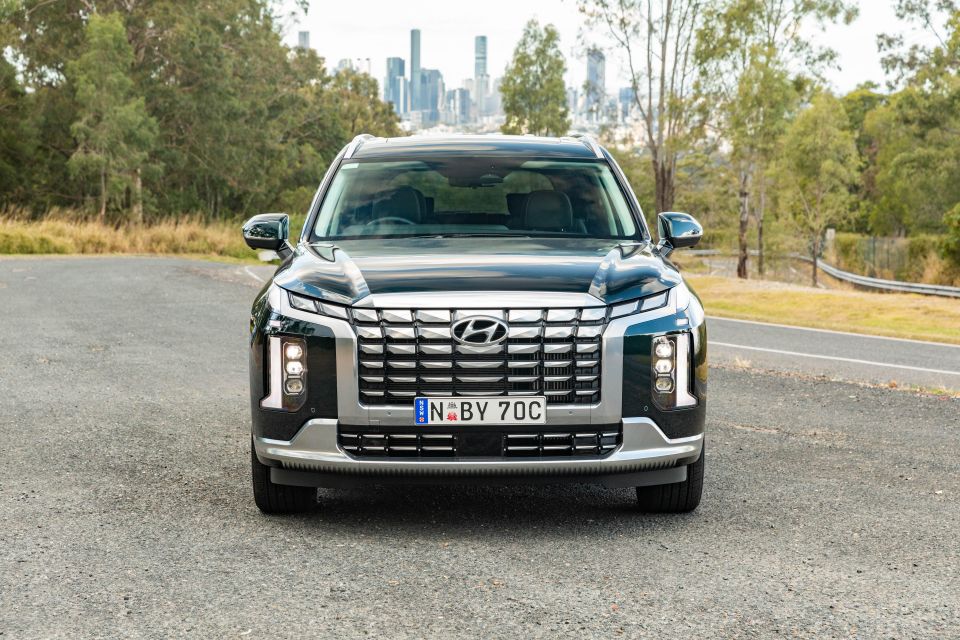
The 2023 Hyundai Palisade range now opens at $65,900 before on-roads for the Elite V6 FWD (the unnamed base model is gone), and tops out with our tester: the Highlander Diesel AWD, priced from $79,900 before on-roads.
In between these two variants sit the Elite Diesel AWD ($69,900) and Highlander V6 FWD ($75,900). Elite prices are up by $3700 for 2023, while Highlander models are up by $4200.
All models are available with a choice of either seven or eight seats, with the former featuring individual second-row captain’s chairs and the latter featuring a second-row bench. Regardless of which option you choose, you’ll pay the same price.
Our tester, complete with gorgeous Robust Emerald paint – a $695 option, as with all the other premium paints – rang up at $83,364 drive-away based on a Sydney postcode.
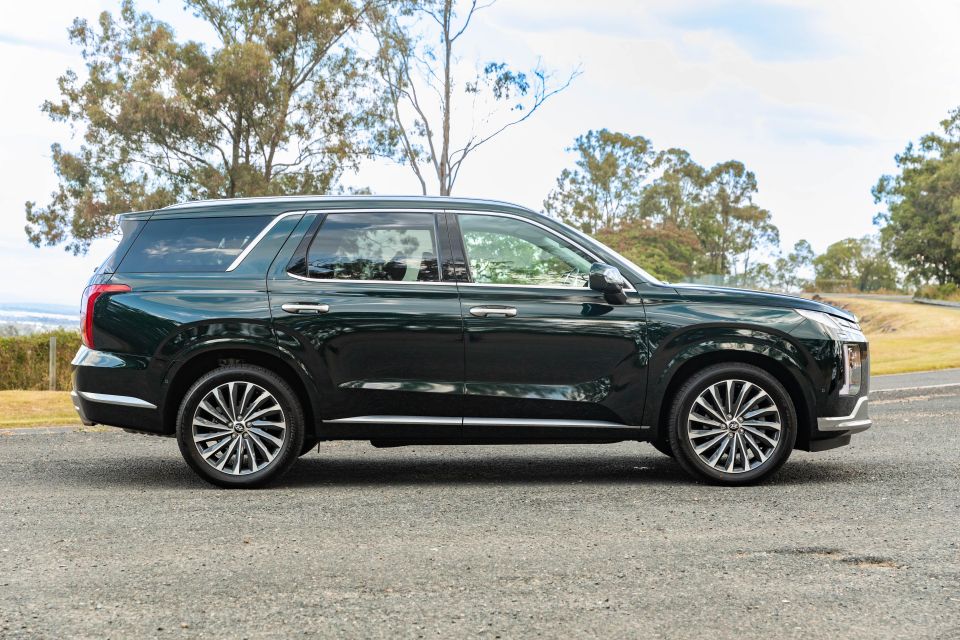
While both the Elite and Highlander are offered with a black interior, only the latter offers different interior colour options. For 2023, these are Warm Grey and Khaki Green, replacing Beige and Burgundy. Each colour is a no-cost option.
As a large crossover designed with the North American market front of mind, the Palisade is conceptually similar to the Mazda CX-9, Toyota Kluger, and upcoming Nissan Pathfinder. None of those models, however, are available with a diesel engine, though the Kluger offers a thrifty hybrid.
The flagship CX-9 Azami LE is priced from $73,878 before on-roads, while the Kluger Grande Hybrid is $75,700 and the Pathfinder Ti-L, due later this year, is priced at $77,890 before on-roads. You could also count the base Jeep Grand Cherokee L Night Eagle as a rival, with a similarly spacious cabin to the Hyundai but a steeper $82,250 list price.
While a large diesel-powered unibody crossover is rare, large diesel body-on-frame SUVs are a dime a dozen. Their ranks include the likes of the Ford Everest Platinum V6 ($77,690) and the Toyota LandCruiser Prado VX ($77,157).

Buy your new car without the stress. It's fast, simple and completely free.

Great service from Travis and team, second time I have used this business would not hesitate to recommend them to anyone
Craig C.
Purchased a Ford Ranger in Sunshine Coast, QLD
CarExpert helped Craig save thousands on his Ford Ranger, now let us save you on your next new car.
Find a dealThe Palisade remains one of the most well-packaged, luxuriously appointed SUVs in the mainstream large SUV segment. We’d go so far as to call it the class benchmark.
Take for instance the third row. I’m 180cm tall, and I can comfortably sit back there. There’s greater legroom than a Kluger, plus better headroom than a CX-9 due to a more upright roofline.
The Palisade is offered with a choice of a three-seat bench or individual captain’s chairs for the second row. You no longer miss out on seat ventilation if you opt for the bench, with each outboard seat featuring heating and ventilation.
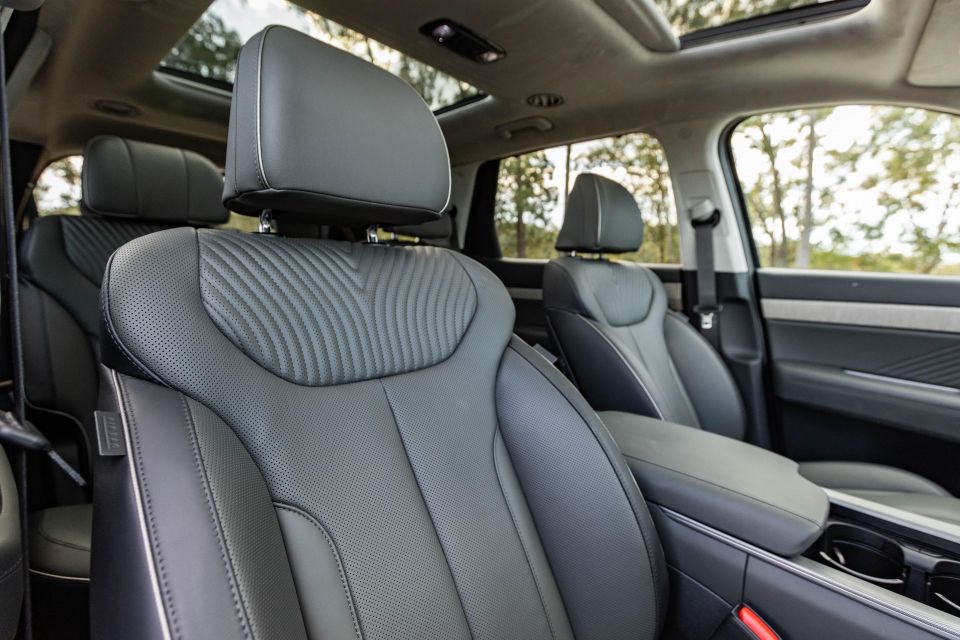

Our tester had the captain’s chairs, which recline and can be dropped with the press of a button inside the boot area, and also tilt and slide forward with the press of a button on the seat itself.
Access to the third row is fairly easy, with a decently sized opening, but opting for the captain’s chairs gives you a centre walkway making it even easier to get to the farthest row.
Having taken a power nap in one of the captain’s chairs following a long drive, I can confirm they’re comfortable.
With either second-row option, you enjoy an almost completely flat floor and therefore plenty of legroom for all second-row occupants. Headroom is also excellent.

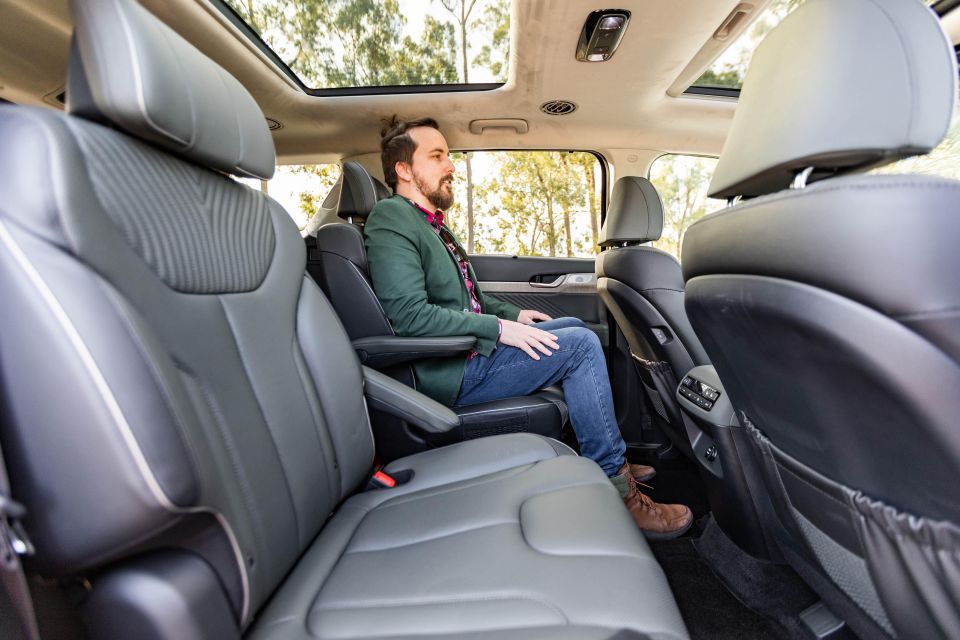
Every occupant in the second and third rows has a USB-C outlet and two cupholders, while there’s a 12V outlet for each row in addition to two up front.
The interior isn’t perfect. The unusual wood-look trim remains even with the 2023 update, and looks as unconvincing as ever. Nicer faux woodgrain would be appreciated or better still, a continuation of the attractive, tactile metal-look trim on the centre console.
The indicator stalk also lacked the quality damping we usually expect in a Hyundai product, though this may have been exclusive to our tester.
In overall ambience, however, the Palisade shades the fussier Kluger and largely matches the CX-9 in upscale feel.

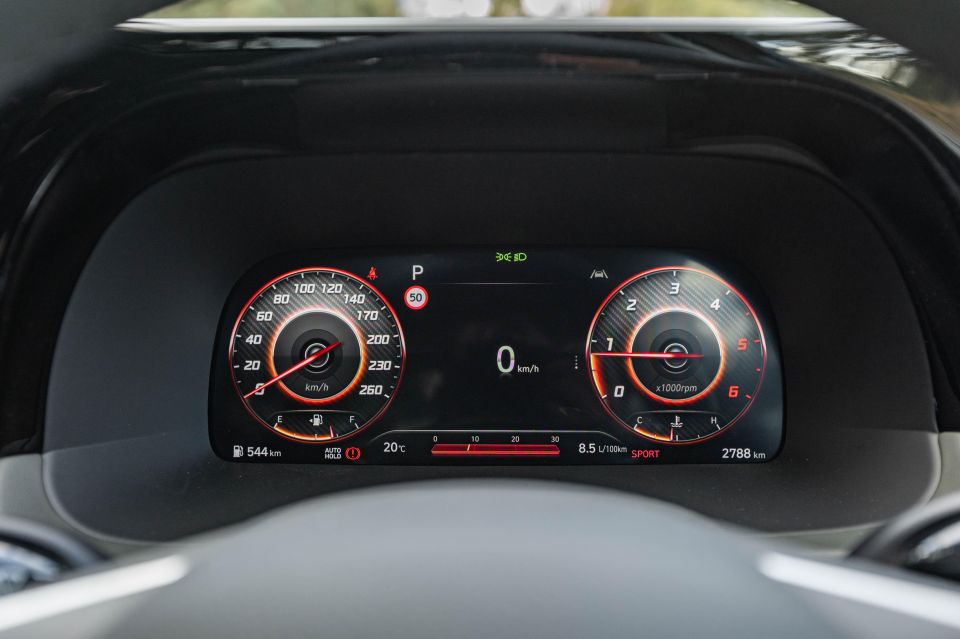
The dashboard is finished in soft-touch materials, which extend to the sides of the centre console, while the pillars and headliner are finished in soft suede trim.
All that’s missing in terms of ambience is ambient lighting, even though colour-adjustable ambient lighting is available in the North American market and was also enhanced for 2023.
The new digital instrument cluster looks much the same as in other Hyundai products, though like various up-spec Hyundai and Kia models it features the clever Blind Spot View Monitor – this projects footage of the vehicle’s blind-spot to the instrument cluster whenever you activate the indicators.
There’s a larger touchscreen for 2023, up from 10.25 inches to 12.3 inches. The voice prompt button now works for more than just smartphone mirroring, allowing you to use prompts for features like the heated and ventilated seats. You can still long-press it to use voice prompts for Apple CarPlay and Android Auto.
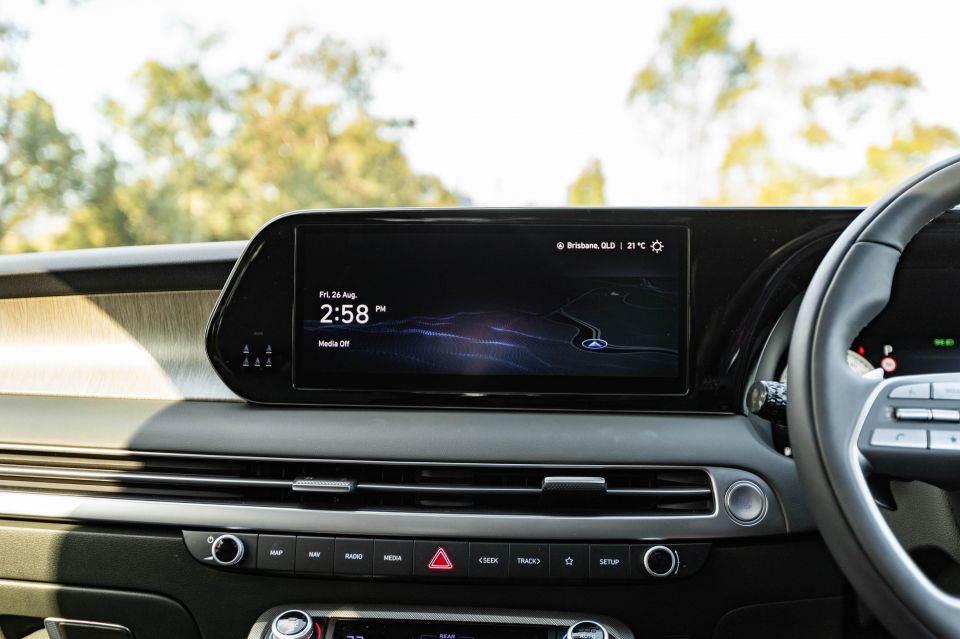
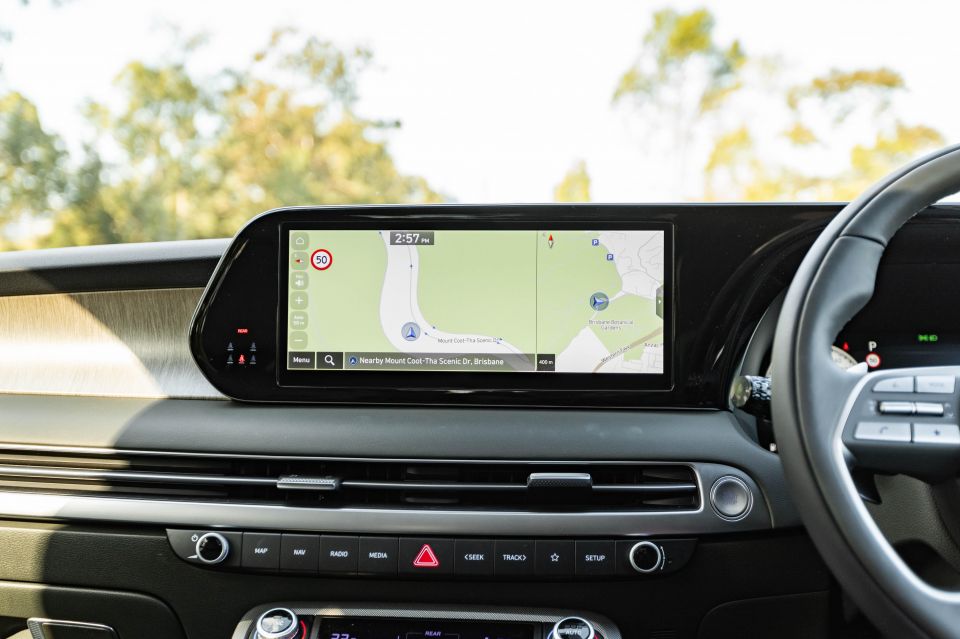
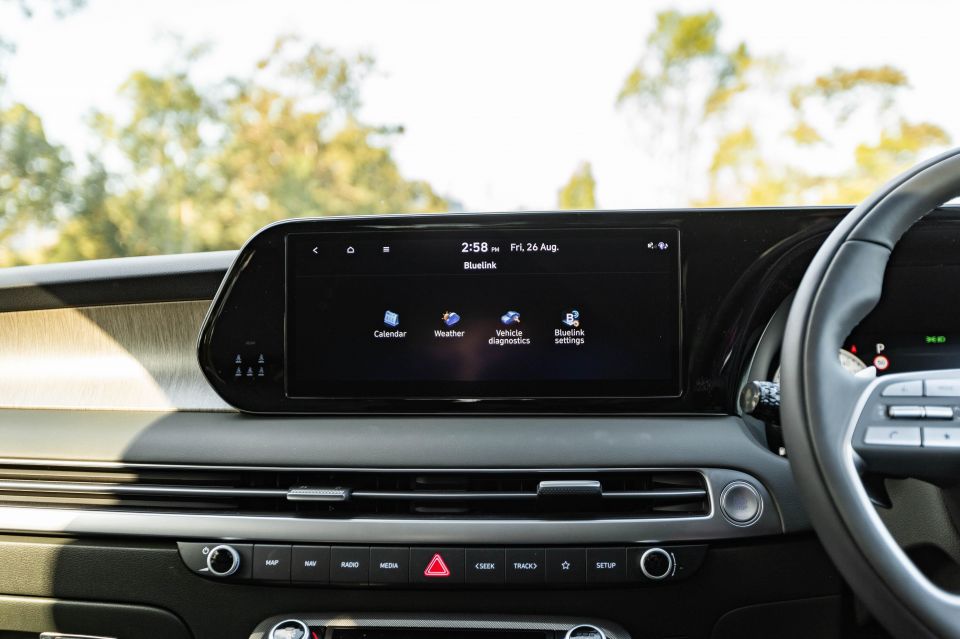
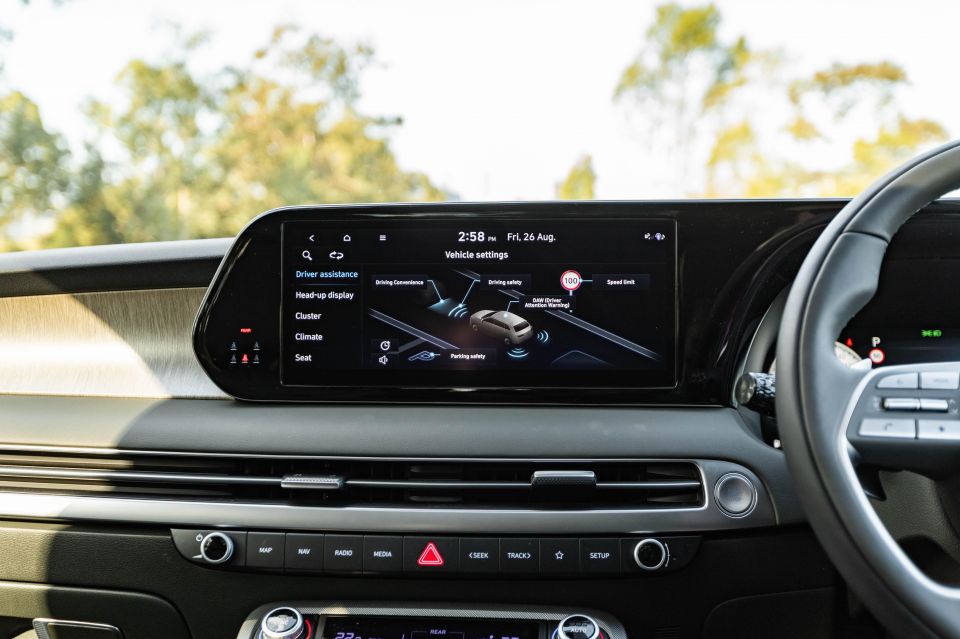
The voice recognition for the native infotainment is a bit patchy. It alternated between perfectly understanding long, unusual place names that even Google Assistant struggled to comprehend, and completely botching them. On one occasion, the system understood my intended destination perfectly, only to send me to a different location in the same suburb.
The infotainment system also includes functions like a Driver Talk function, which transmits the driver’s voice to a microphone in the third row, plus a quiet mode that reduces stereo volume for parts of the cabin, and voice memo and Sounds of Nature apps.
While Android Auto still continues to only take up only the left two-thirds of the screen, the larger screen size means it no longer looks frustratingly small. Apple CarPlay takes up the whole screen, as before.
There’s only one USB-A outlet left in the car, and it’s what you’ll use for smartphone mirroring as Hyundai continues to go without wireless mirroring. Every other USB outlet in the car – six in total – is the newer USB-C format.
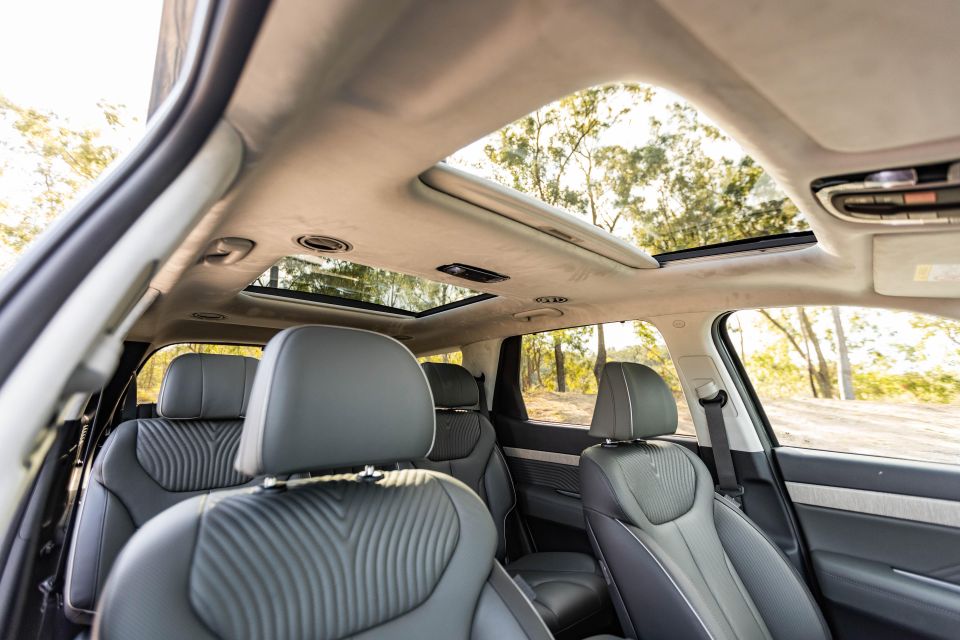
The front seats are comfortable, with the driver’s seat boasting a thigh extender. Missing, however, is the driver’s seat massage function available in markets like the US. If you want a massage while you drive, you’ll need to look at the pricier, unrelated Genesis GV80.
The Palisade’s interior isn’t just elegant, it’s functional, too. The centre stack sticks with conventional buttons instead of du jour touch-capacitive switchgear, and they’re well-sized and tactile.
The climate controls in particular are logically laid out and positioned in a way that makes them easy to read and reach.
The continued presence of hard shortcut buttons for the infotainment touchscreen is also appreciated, and Hyundai designers have managed to maintain a significant amount of conventional switchgear without the dashboard looking confusing and button-heavy.
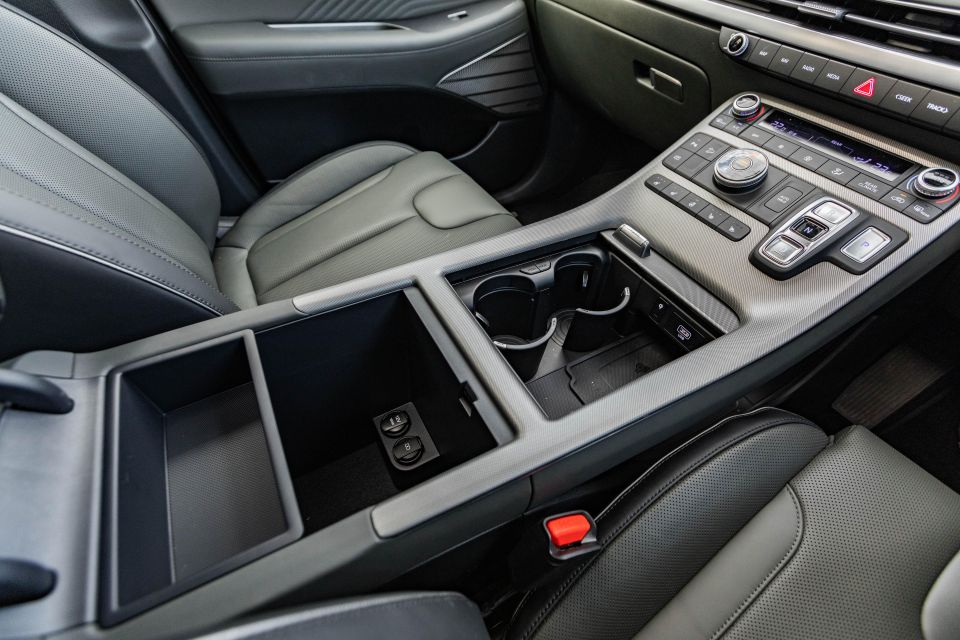
Storage is superb. Under the centre console is a sizeable storage area where you’ll also find charging outlets, while the centre console itself contains a covered bin and a concealable pit.
The bin is so cavernous it can swallow a 600ml bottle standing up and have clearance to spare, while the pit features clever, retractable cupholders, a wireless charging pad, and the USB-A outlet for the smartphone mirroring.
You can also cover it entirely for a cleaner look, with the lid finished in the same attractive metal-look trim as the rest of the centre stack. The door pockets will also fit 1L bottles.
In terms of child seat anchor points, there are two ISOFIX points for the second row (regardless of whether you pick the seven- or eight-seat option), plus top-tether points for each second-row seat. In the third row, there are only two top-tether points and one ISOFIX point.

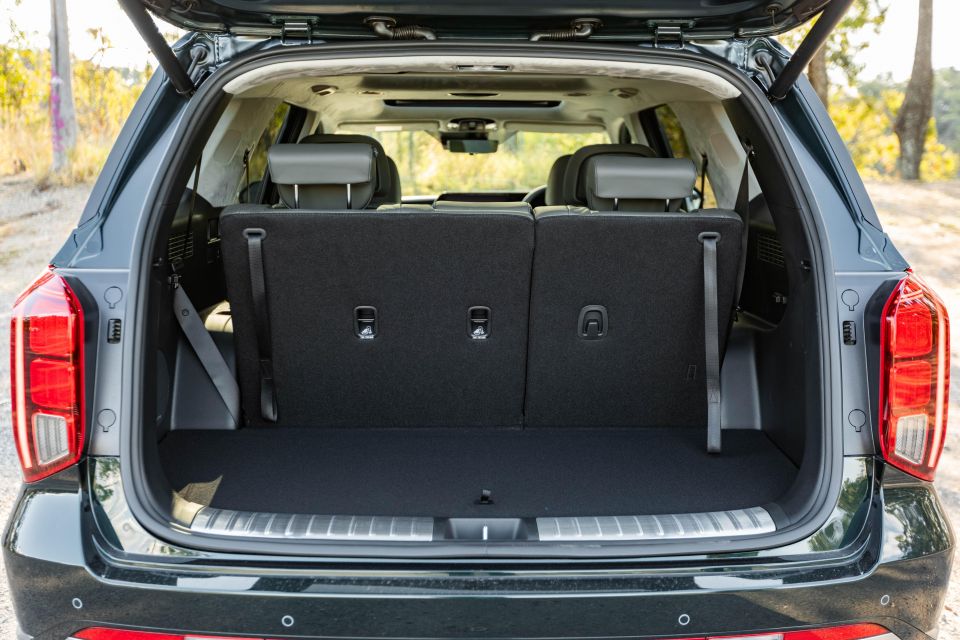
There’s 311L of boot space with the third row erect, increasing to 704L with the third row dropped.
The third row must be dropped manually, even though a power-folding third row is available in other markets, but you can drop the second row seats with the push of a button in the cargo area.
The Palisade has a full-sized alloy spare, while the cargo cover can be stashed in a handy compartment under the boot floor.
We’d be remiss if we didn’t mention the new Bluelink connected car services, accessible via the Bluelink smartphone app.
For too long, car companies have largely left this level of connectivity in Australia to Tesla despite offering this tech in other markets. Hyundai’s latest generation of connectivity technology debuts locally in the Palisade, with plans to progressively roll it out to other Hyundai models.
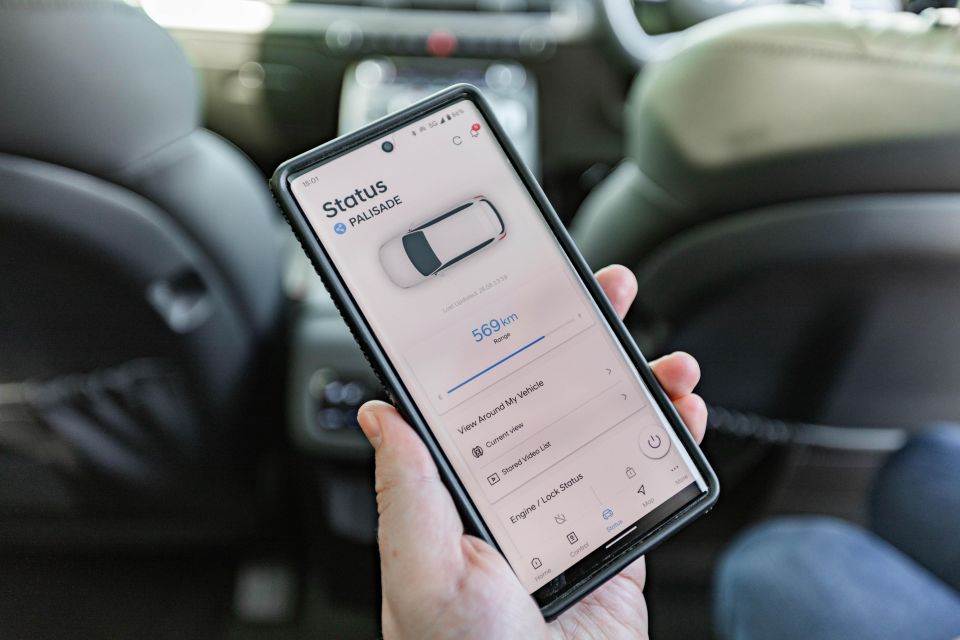
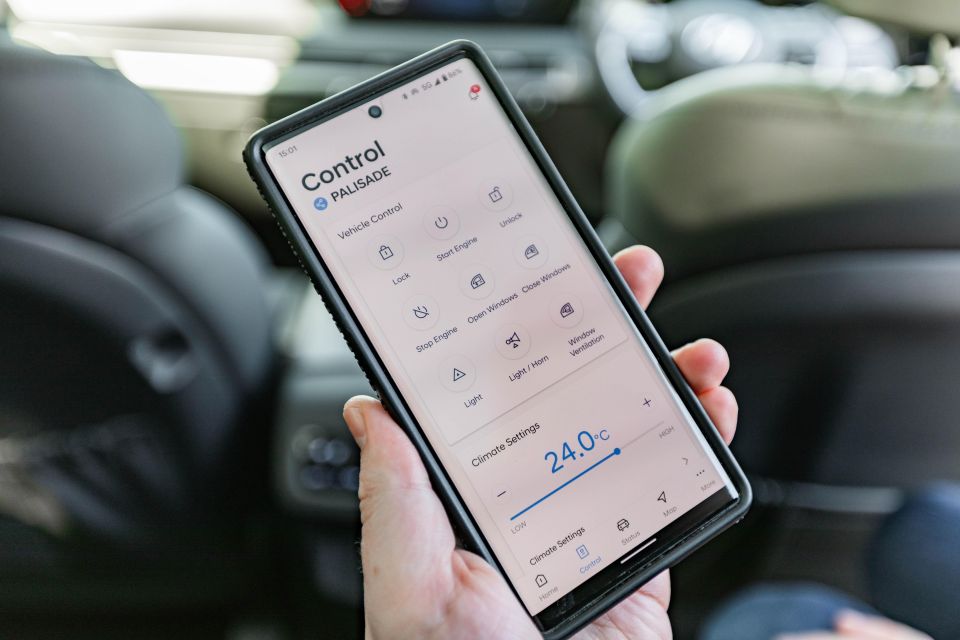
Inside the car, the Bluelink suite includes an SOS emergency call button, voice control for the infotainment system, calendar syncing and live weather and traffic information. The Bluelink menu on the touchscreen also includes vehicle diagnostics.
The headline act, however, is the smartphone app which allows you to view the vehicle’s status and control various functions. For example, you can check remotely if the car is running, where it’s parked, whether it’s locked or unlocked, and if the windows are open and the air-conditioning is running. You can also check the remaining range.
Not only that, you can control a raft of functions as well. For example, you can start or stop the vehicle via the app, turn on the hazards, sound the horn, open or close the windows, and adjust the climate control.
The app isn’t perfect – we found it laggy at times, and if you’re in key fob range of the vehicle we wouldn’t bother using it to unlock the car. The live surround-view camera feed function also wouldn’t work for us. Nevertheless, this is an impressive level of connectivity we feel many owners – particularly those with families – will appreciate.
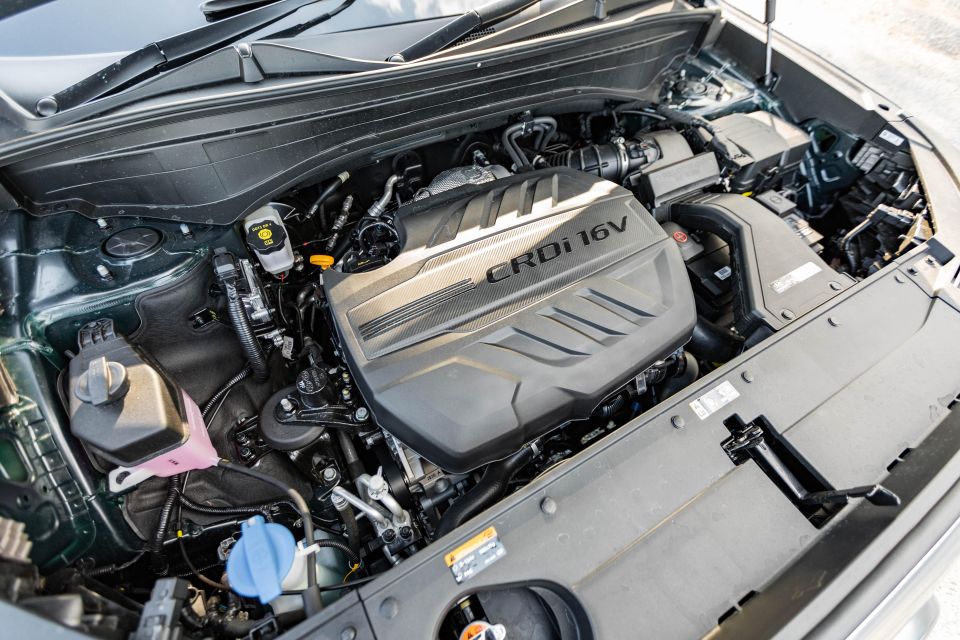
Where expert car reviews meet expert car buying – CarExpert gives you trusted advice, personalised service and real savings on your next new car.
While the smaller Santa Fe moved to a new platform and gained a trio of turbocharged four-cylinder engines, including hybrid and plug-in hybrid options, the Palisade’s powertrains are carryover for 2023.
Hyundai continues to restrict front-wheel drive in Australian-market Palisades to the petrol V6, and all-wheel drive to the diesel.
Our tester had the 2.2-litre turbo-diesel four-cylinder engine, which produces 147kW of power at 3800rpm and 440Nm of torque between 1750 and 2750rpm. Those outputs are down 70kW on the petrol V6, but up 85Nm.

Over a loop comprising a mix of inner-city, suburban and highway driving, we averaged 7.9L/100km – we averaged 10.8L/100km on the same loop in the pre-facelift Highlander V6 FWD. Over 586km of driving the 2023 Palisade Highlander, we averaged 8.8L/100km.
The official combined cycle claims for the petrol and diesel engines are 10.7L/100km and 7.3L/100km, respectively.
Regardless of engine, towing capacity is 2200kg braked and 750kg unbraked – though only the diesel can have its maximum towball download upped from 100kg to 180kg.
It’s no match, then, for the likes of a body-on-frame Prado or Everest with their 3.5t towing capacities, but it holds its own against a CX-9 or Kluger, both of which will tow up to 2t.
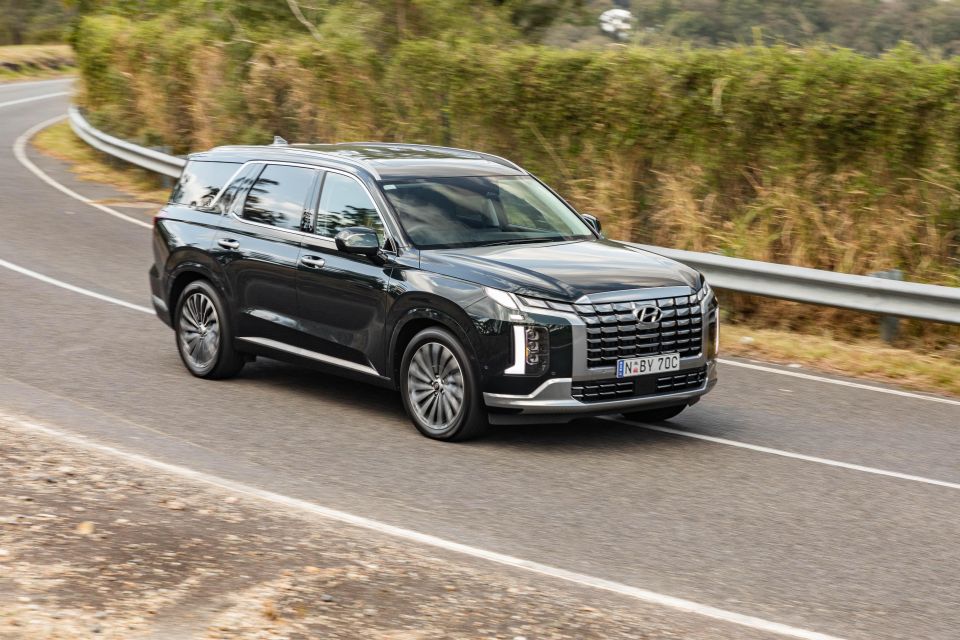
The turbo-diesel may cost an extra $4000 over the V6, but the inclusion of all-wheel drive – not to mention the superior fuel economy – makes this powertrain the pick of the Palisade range.
The petrol V6 is considerably thirstier and a heavy right foot can provoke wheelspin off the line. With the all-wheel drive diesel, there’s more grip up front and more secure handling, plus better fuel economy.
While it has a bit of a workmanlike engine note and a slight delay off the line, the turbo-diesel four idles smoothly and has plenty of grunt even with a few extra bodies on board.
Engine noise and wind noise are also well suppressed, and at highway speeds you can easily carry on a conversation.
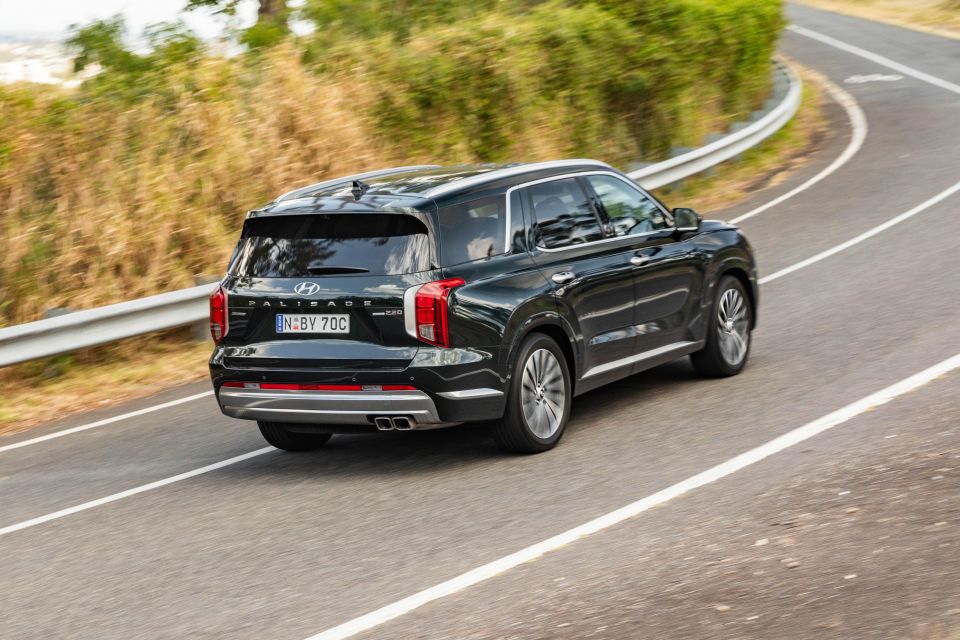
There’s a faint amount of tyre roar on coarser chip roads, and sometimes around 100km/h we observed an occasional wind buffeting noise plus a faint A-pillar rattle on rough roads, but otherwise the Palisade’s refinement is hard to fault.
We’d love to see a version of the Genesis GV80’s smooth turbo-diesel inline-six, and there’s precedent for a six-cylinder oil-burner in a flagship Hyundai crossover – the 2007-15 ix55/Veracruz – but the turbo-diesel four is sufficiently capable and refined.
The Santa Fe diesel has moved to a dual-clutch automatic while the Palisade sticks with a torque-converter, but we have no complaints about the retention of this smooth-shifting unit.
The Palisade absorbs bumps well, with a nicely damped ride that avoids feeling too floaty. It feels more tied-down, for example, than a Kluger, and settles quickly from bumps and undulations.

Sometimes you forget how big the Palisade is thanks to its balanced handling and its well-weighted steering. While it hardly feels like a sports car, its outsized dimensions are made more manageable through deft tuning of the suspension and steering and only a tight parking lot or narrow street will remind you just how big this bus is.
The steering is light and direct without feeling disconnected and feather-light. You can activate Sport mode to add some artificial weight to the steering, but it feels wholly unnecessary; Sport mode also holds onto gears for a touch too long for my liking.
The Palisade stays nice and flat in corners, with well-controlled body roll. It’s not as nimble as the smaller Santa Fe, but it’s impressively poised for a large crossover.
As is the norm for Hyundai’s lane support systems, lane-keep assist proves to be somewhat more intrusive than some rival brands’ systems and can tug at the steering wheel rather assertively, while Lane Following Assist is so assertive you almost feel it could drive the car itself – but keep those hands on the wheel…
The lane support systems don’t bother me all that much. What does bother me is the Palisade’s new traffic sign recognition feature.
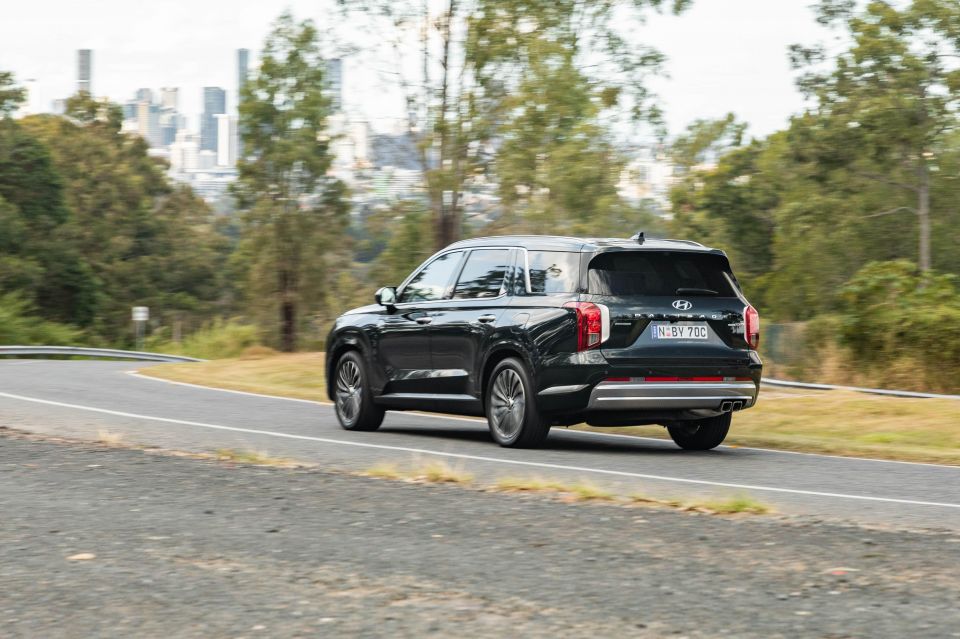
It detects signs well, mind you, even detecting signs for roundabouts and the like. The problem is it sounds a chime every time it detects a speed limit sign, and sounds multiple chimes if you exceed a speed limit by more than 5km/h. Hyundai says this is due to a new European-market requirement.
The overspeed chime is somewhat understandable, but the system’s insistence on sounding a chime every time you enter a new speed zone is utterly overbearing.
For example, over the course of our week with the Palisade, we found it would chime almost every single time we’d turn into a different street, regardless of whether there was a speed limit sign.
The worst part is the system will default to on, and there’s no way to have just the recognition feature on without the chimes – it’s all or nothing. After a few days of incessant chiming, I’d find myself going into the settings every time I started the car just to turn it off.
With the system off, there’s still navigation data-based signage on the infotainment system’s map screen.


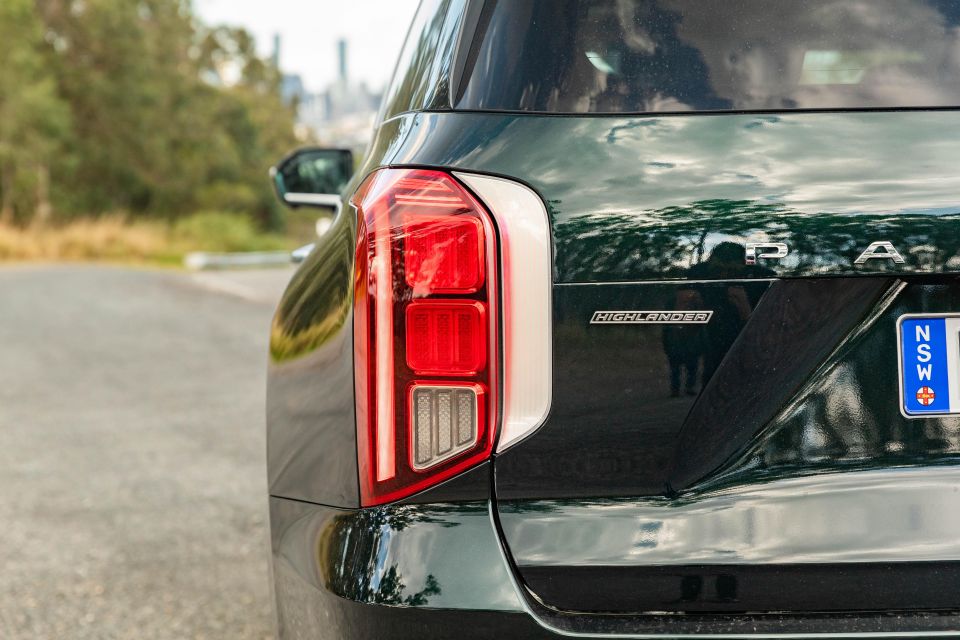

Palisade Highlander highlights:
New features for MY23 include:

That’s in addition to features found in the Palisade Elite:
That’s an enormous list of standard kit, even at this price point, but there are some notable omissions. You can’t get ambient lighting as you can in markets like the US, while the Palisade also misses out on a massaging driver’s seat and a power-folding third row.
In terms of equipment, the Palisade Highlander puts a Kluger Grande in the shade, though the CX-9 Azami LE still has a couple of aces. Its second-row captain’s chairs are power-adjustable, while its wood trim is real and its LED headlights are adaptive.
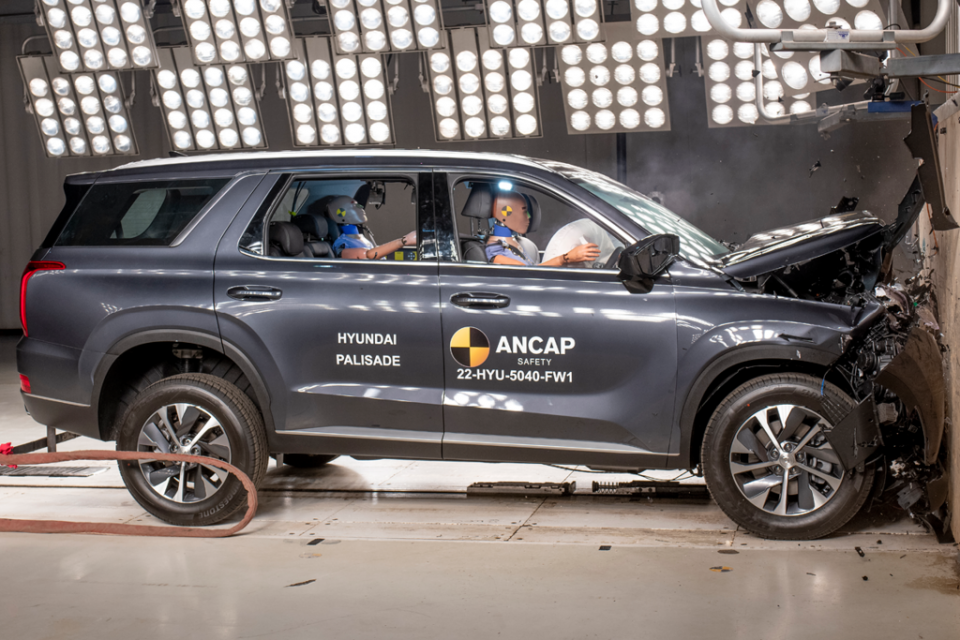
After being dinged with a four-star rating from ANCAP earlier this year for the pre-update model – an outlier when most recent launches have received five stars – the updated Palisade was reassessed by ANCAP and awarded five stars.
It received scores of 84 per cent for adult occupant protection, 88 per cent for child occupant protection, 62 per cent for vulnerable road user protection, and 83 per cent for safety assist.
The improved safety performance is largely due to the presence of a new centre airbag plus a more sophisticated autonomous emergency braking (AEB) system.
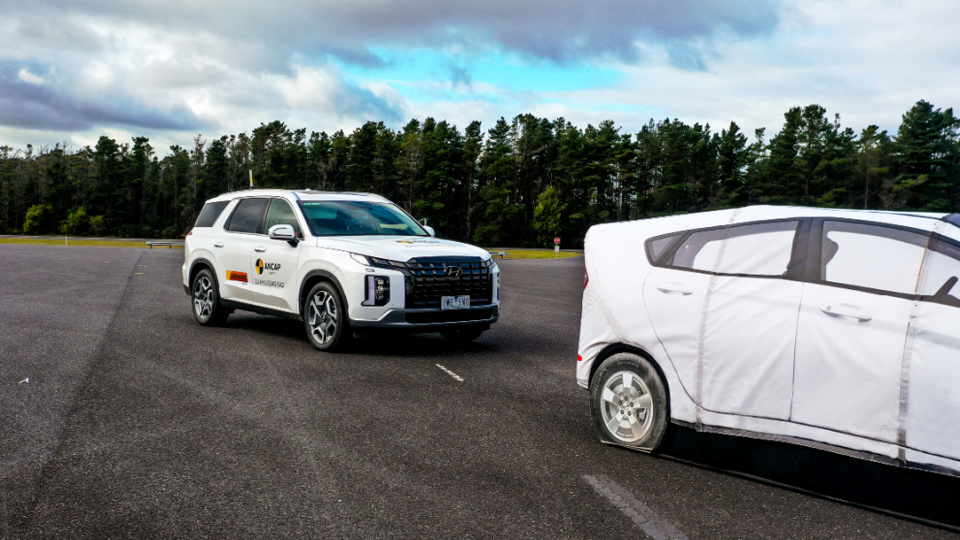
Standard safety features include:
Palisade Highlander adds:
We miss out on the Highway Driving Assist feature found in markets like the US, which features assisted lane changes and adjusts the vehicle’s position in a lane should a vehicle in an adjacent lane get too close.
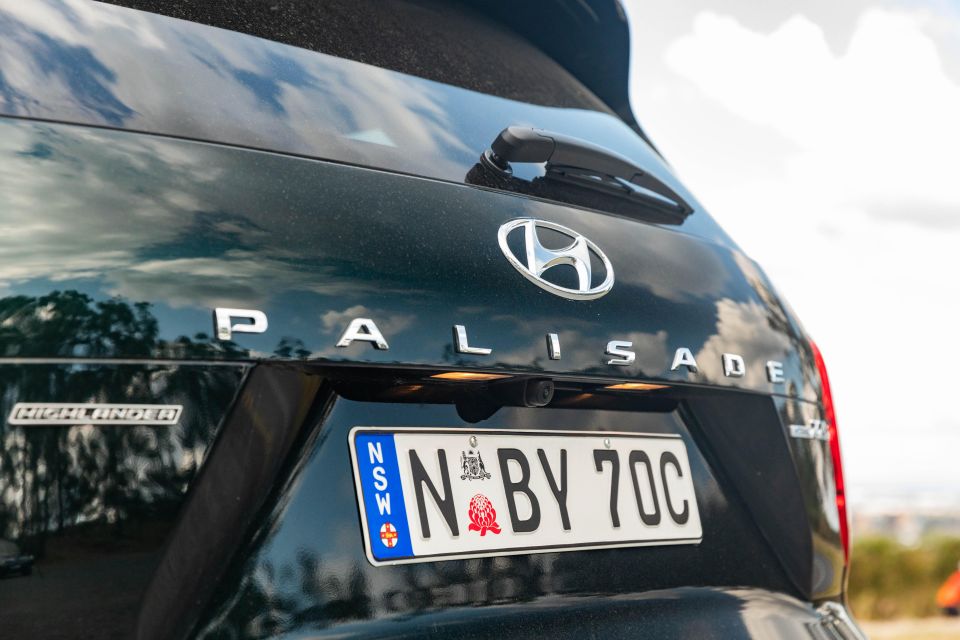
The Palisade is backed by a five-year, unlimited-kilometre warranty.
Servicing is required every 12 months or 15,000km, whichever comes first. The first five services each cost $489, which is $90 more than the petrol and works out to be $2445 over five years.
That’s considerably pricier than a Toyota Kluger Hybrid, for which the first five services each cost $250. It compares more favourably with the Mazda CX-9 which, while cheaper over five years at $1982, has shorter intervals of 12 months or 10,000km.

Hyundai hit the nail on the head with the Palisade in terms of packaging and presentation.
The updates for 2023 serve to burnish the Palisade’s credentials, adding even more technology and even bolder looks.
Its boxy shape maximises interior space, while its exterior is bold and its interior intuitively laid-out yet premium in appearance.
While the Palisade is somewhat unusual in being a large unibody crossover with a diesel powertrain, the small four-cylinder engine has enough grunt for urban and highway driving and noise is well-suppressed.
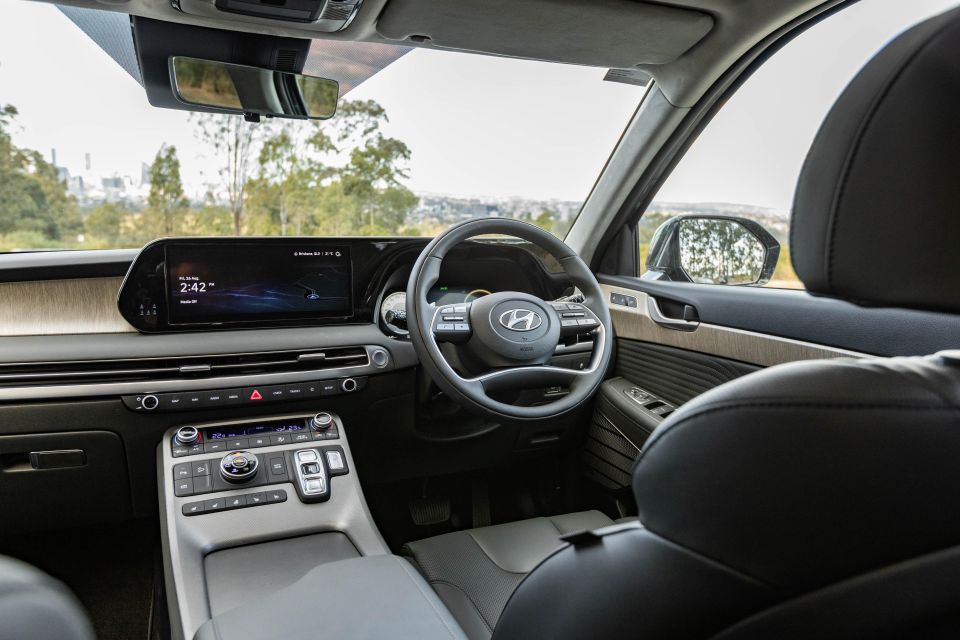
The Palisade’s large dimensions belie its tidy handling, while its ride is pliant without being floaty.
All of this makes the Palisade a comfortable, economical family hauler, with its raft of USB outlets and cupholders and ample storage making it superb for road-tripping.
All we’re left with are nitpicks: service pricing that could be a bit cheaper, wood trim that could be more convincing, and a traffic sign recognition system that needs to be silenced.
With a five-star ANCAP rating now under its belt, the Palisade’s winning combination of technology, versatility and style is hard to ignore.

Click the images for the full gallery
Where expert car reviews meet expert car buying – CarExpert gives you trusted advice, personalised service and real savings on your next new car.
William Stopford is an automotive journalist with a passion for mainstream cars, automotive history and overseas auto markets.


Josh Nevett
2 Days Ago


CarExpert.com.au
3 Days Ago


Damion Smy
5 Days Ago


Derek Fung
5 Days Ago


Ben Zachariah
8 Days Ago
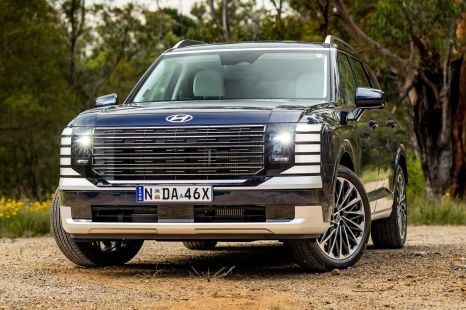

Matt Campbell
11 Days Ago